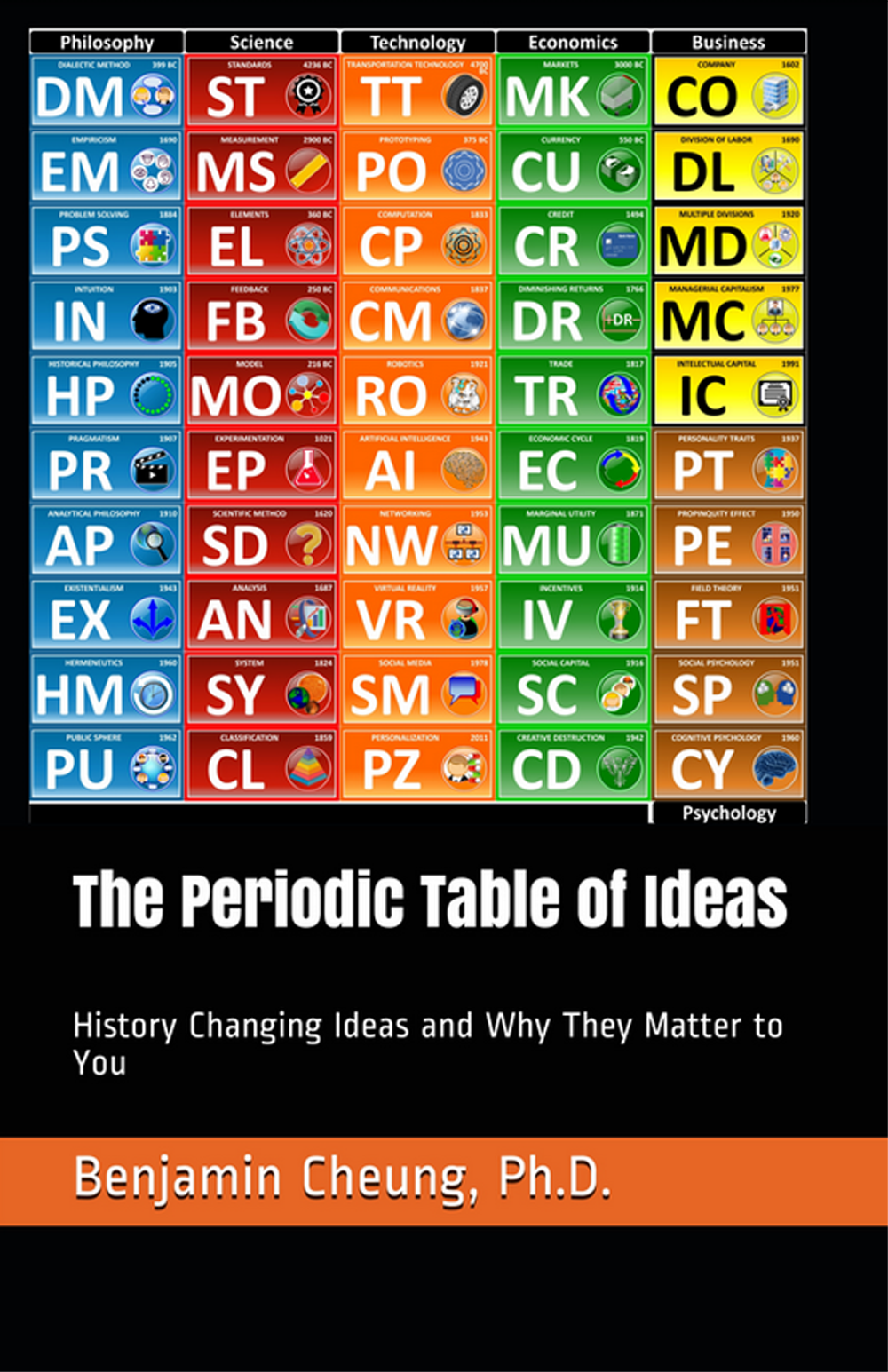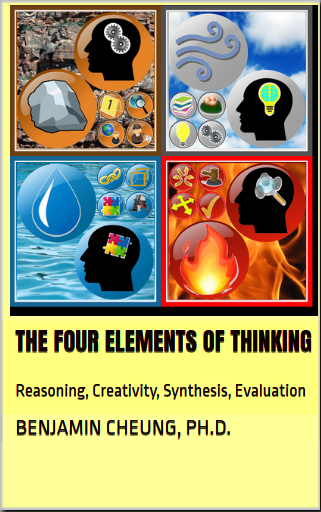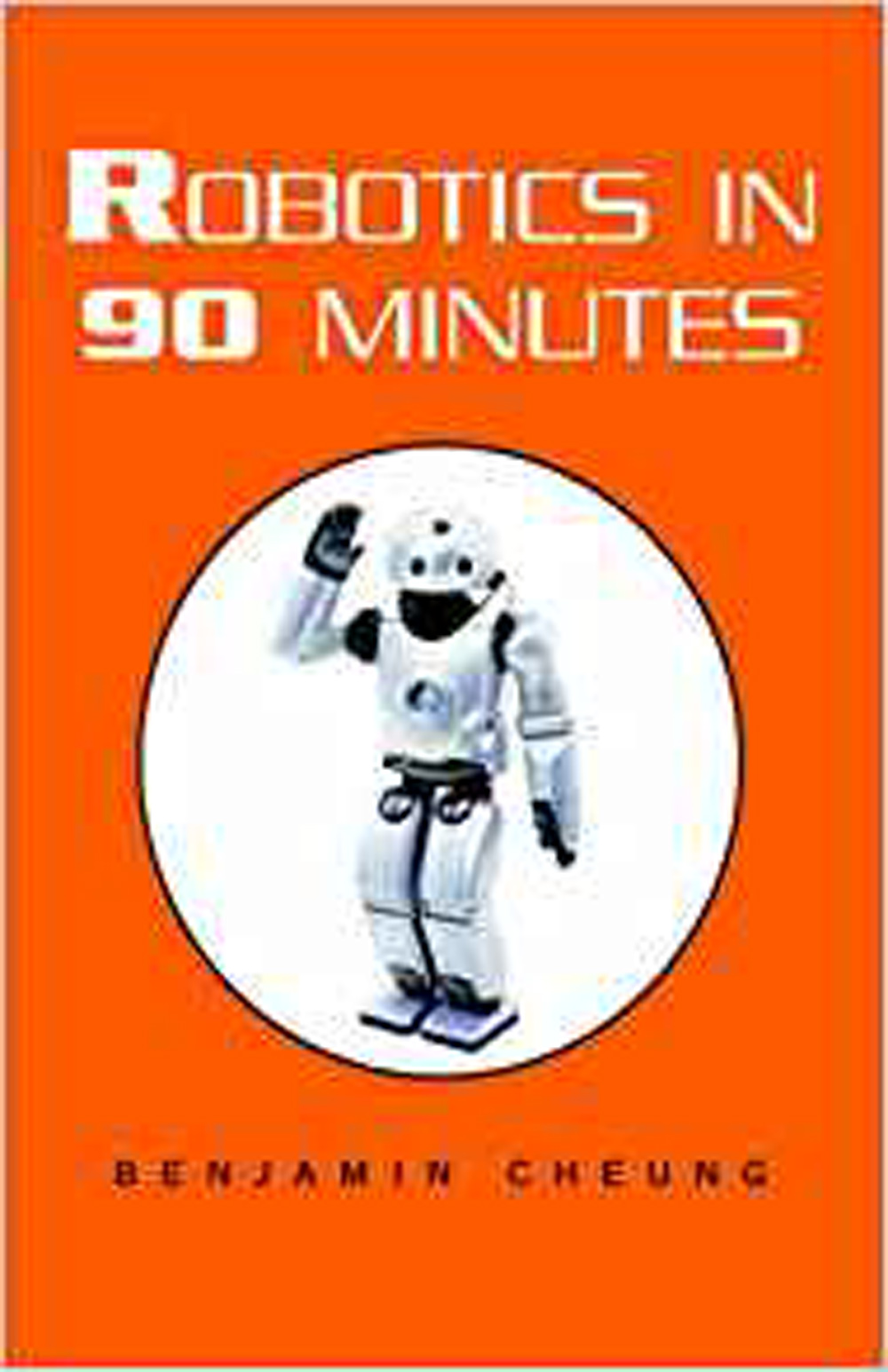32 INNOVATION FACTORS

32 Innovation Factors identify 32 factors that are used in developing
new technologies. This is a book bout how to think "out of the box". 32 Innovation factors describes the elements behind the creative Engineering process.
The Innovation Factors are a engineering periodic table. These factors are combined elementally to structurally generate innovation. They represent a new way to think about engineering for novelty. They can improve existing systems and generate new product families. Over nine years in the making, this book distills those mental building blocks engineers use to brainstorm.
The first part of the book details the engineering life cycle. The second part describes the Innovation Factors. The third part looks at a set of core technologies and how the Innovation Factors can be applied to them.
Engineering and the development of new technologies has reused
fundamental concepts repeatedly. This book identifies those factors
that are timeless and atomic. If you study technologies and engineering
eventaully you will see ideas, concepts, and patterns that reoccur.
Whether you are in business, marketing, engineering, architecture or
have influence over the development of technologies looking for novel
and creative solutions and innovative solutions, this book is for you.
These concepts include:
A. ADAPTIVE - The ability to change something to a different purpose or function.
B. APERTURE - An aperture is a portal. It serves as the gateway into a system.
C. BOUNDARY - The boundary or interface to your system.
D. BUFFER - A buffer is something that is used between the system and the external environment. Armor, cushions, depositories, holding tanks, jackets, reservoirs, safes, shields, shock absorbers, sleeves, vaults, video buffers, and voice mail are examples of Buffers.
E. CELLULAR - The cellular factor breaks down a system smaller individual sub-components.
F. CHANNEL - This Innovation factor is about sharing.
G. COMPOSITE - The composite innovation factor blends two separate entities together.
H. CYCLES - Cycles are anything that repeats in time.
I. EPICENTER - An epicenter is defined as the central focus of a system, the point of control or the focus of a process.
J. FEEDBACK - The idea of feedback is to use a result (output) as an impetus (input).
K. FILTERING - Filtering selectively passes some elements while blocking other things.
L. FUZZY - The fuzzy factor is about shades of grey.
M. INTEGRATED - Integrating two or more things together relates them in some way.
N. INTERCHANGEABLE - The interchangeable factor relates to elements in a system which can be exchanged for another.
O. LAYERED - The layer factor is a band or coating.
P. MATCHING - The matching innovation factory identifies complimentary opposites.
Q. MODULARITY - A module can be something which has a well-defined interface, and is well delineated (or encapsulated).
R. MODULATED - The Modulated innovation factor regulates, adjusts, and adapts things.
S. MULTIPLEXED - The concept of multiplexing involves interweaving things together.
T. NETWORKED - The Network factor deals with connectivity.
U. QUANTIZED - The quantized factor relates to the discrete magnitude values used to describe a quantity.
V. REPRESENTATION - The representation factor deals with a logical, virtual, or proxy representation of something.
W. RESONANCE - Resonance refers to phenomena where waves reinforce each other.
X. SCALING - Scaling allows something to grow or shrink without changing its true nature.
Y. SIGNATURE - The signature factor represents security measures in your solution.
Z. SWARM - The swarm innovation factor deals with a quantity of specialists over the quality of generalists. One spectrum ranges from the specialist to the generalist. Generalists tend to be few in number, costly, indispensable, high performance units. Specialists gravitate toward numerous, efficient, inexpensive, disposable, special purpose units.
AA. SWITCHING - This factor deals with switching between alternatives. The idea of switching includes alternating functions, changing roles, selecting amongst choices, swapping things, transmuting something, and turning on or off.
BB. SYMBIOSIS - The symbiosis factor deals with a mutually beneficial relationship between two things. Like a marriage, each partner in a symbiotic relationship depends on the other.
CC. SYMMETRY - Two things have symmetry if they form a complimentary mirror image of each other. Many things in nature are symmetrical.
DD. TRANSIENT - A transient is a short-lived phenomenon. A single note struck on a piano is an example of a transient. It has a rise time (attack) and a fall time (decay).
EE. TRIGGERING - A trigger involves some event that reflexively causes another event to occur. Nature is rife with triggers, likewise numerous inventions utilize triggers.
FF. WAVES - Waves can represent a cascade of things that permeate the environment. In nature, a wave is something that ebbs and flows, undulates, or moves to and fro. Electromagnetic waves, light waves, sound waves, and water waves are example of waves.
PUBLICATION INFORMATION
·
Published: November 2003
·
Format: Perfect Bound Softcover(B/W)
·
Pages: 332
·
Size: 5.5x8.5
·
ISBN: 9781401097349
EXPLORE OTHER BOOKS











